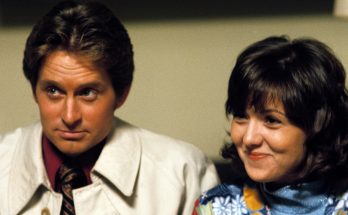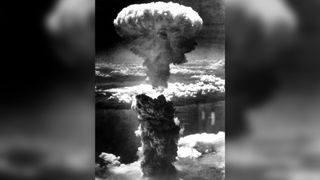
Here, the mushroom cloud created when the nuclear bomb exploded over Nagasaki, Japan, on Aug. 8, 1945. (Image credit: Photo12/Universal Images Group via Getty Images)
Fission is the process by which an atom splits in two. Fission can occur spontaneously, via natural decay, or through controlled chain reactions initiated by people. Either way, the process releases a tremendous amount of energy. Nuclear power plants harness this awesome power, but so do nuclear bombs, and there are myriad environmental, social and political concerns raised by human use of this process.
Fission definition
An atom contains protons and neutrons in its central nucleus. In fission, the nucleus splits, either through radioactive decay or because it has been bombarded by other subatomic particles known as neutrinos. The resulting pieces have less combined mass than the original nucleus, with the missing mass converted into nuclear energy.
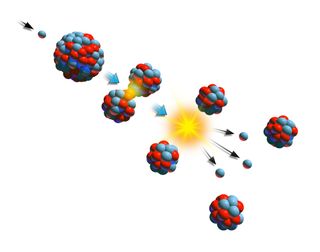
Controlled fission occurs when a very light neutrino, or a nearly massless particle that rarely interact swith other matter, bombards the nucleus of an atom, breaking it into two smaller, similarly-sized nuclei. The destruction releases a significant amount of energy — as much as 200 times that of the neutron that started the procedure — as well as releasing at least two more neutrinos.
Controlled reactions of this sort are used to release energy within nuclear power plants. Uncontrolled reactions can fuel nuclear weapons.
Radioactive fission, where the center of a heavy element spontaneously emits a charged particle as it breaks down into a smaller nucleus, happens only with the heavier elements.
Fission is different from the process of nuclear fusion, when two nuclei join together rather than split apart.
Who discovered fission?
In 1938, German physicists Otto Hahn and Fritz Strassman bombarded a uranium atom with neutrons in an attempt to make heavy elements, according to the Atomic Archive. In a surprising twist, they wound up splitting the atom into the elements of barium and krypton, both significantly smaller than the uranium that the pair started out with. Previous efforts by physicists had resulted in only very small slivers being cut off of an atom, so the pair was puzzled by the unexpected results.
Austrian-born physicist Lise Meitner, who had fled to Sweden following Hitler’s invasion of her country, realized that the split had also released energy. Working on the problem, she established that fission yielded a minimum of two neutrons for each neutron that sparked a collision. Ultimately, other physicists realized that each newly freed neutron could go on to cause two separate reactions, each of which could cause at least two more. A single impact could jumpstart a chain reaction, driving the release of still more energy. Italian physicist Enrico Fermi had also produced fission earlier in 1934, but had not realized it, according to the Atomic Archive. Fermi would ultimately create the first self-sustaining nuclear fission reactor on Dec. 2, 1942, in a basement in Chicago, according to Argonne National Laboratory. This self-sustaining reaction is known as “criticality.”
Fission bombs
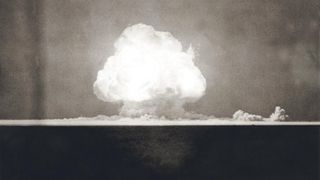
In an intellectual chain reaction, scientists began to realize the possibilities of fission. A letter to U.S. President Franklin Roosevelt at the start of World War II, drafted by Hungarian physicist Leo Szilard and signed by Albert Einstein, noted that such research could be used to create a bomb of epic proportions, and raised the specter that Germans could deploy such a weapon against America. Roosevelt funded American research on the atom bomb, and in 1941, the Office of Scientific Research and Development was formed with the aim of applying the research toward national defense.
In 1943, the Army Corps of Engineers took over the research for making a nuclear weapon. Known as the “Manhattan Project,” the top-secret endeavor, led by physicist J. Robert Oppenheimer, ultimately resulted in the creation of the first atomic bombs. The first, “Little Boy,” used 140 pounds (64 kilograms) of highly enriched uranium-235 in a fission bomb, and was dropped on Aug. 6, 1945 on Hiroshima, Japan. The second was “Fat Man,” which weighed 10,300 pounds (4,670 kg) and used plutonium-239 to set off a chain reaction. It was dropped on Nagasaki on Aug. 9, 1945.
No one has used fission bombs in warfare since, but several countries have them in their arsenal. Ultimately, militaries found that fusion could power more powerful bombs, but fission was often the first step in the chain. For instance, the Tsar Bomba that was detonated in 1961 created the largest nuclear blast in history. It used fission as the first step in a chain reaction that ended in fusion.
Nuclear power
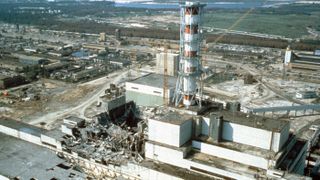
More commonly, fission is used to generate energy within a nuclear power plant. Power plants typically use uranium and plutonium isotopes because these reactions are easiest to control, according to the Department of Energy. To keep these chain reactions in check, power plants cool the nuclear cores, typically with water.
However, the process creates a significant amount of nuclear waste, such as uranium tail millings, spent reactor fuel and radioactive waste that can be hazardous to both people and the environment for thousands of years, according to the Energy Information Administration.
What’s more, nuclear power plants can “meltdown,” which poses a potentially catastrophic risk to humans. The biggest nuclear meltdown in history, at the Chernobyl Nuclear Power Plant in Ukraine, blanketed the surrounding area in radioactive fallout that made an 18-mile-wide (30 kilometers) area uninhabitable. And a 9.0-quake offshore Japan led to a massive tsunami that inundated the Fukushima Daiichi power plant, causing the reactors to meltdown and sending tons of radioactive cooling water into the ocean, according to the World Nuclear Association. In the U.S., mechanical failures at the Three Mile Island power plant in 1979 led to a loss of coolant, causing the nuclear cores to overheat and partially melt down. Ultimately, the partial meltdown did not result in higher-than-average radiation exposure in people in the surrounding areas, according to the Nuclear Regulatory Commission but it raised awareness of the potential dangers of nuclear power and spurred changes meant to prevent such accidents in the future.
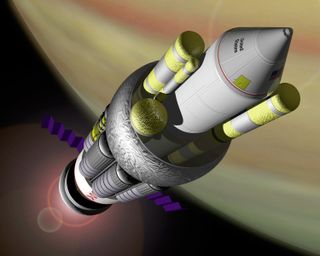
In the 1960s, the U.S. government explored the possibility of using fission as a method of rocket propulsion. However, the signing of the Limited (Nuclear) Test Ban Treaty in 1963 put an end to the aboveground explosion of all nuclear weapons. In 2023, DARPA and NASA announced that a nuclear-fission powered rocket could send astronauts to Mars in as little as 45 days, and that such a rocket could be available as soon as 2027. NASA has also expressed interest in building a nuclear fission power plant on the moon by 2030.


